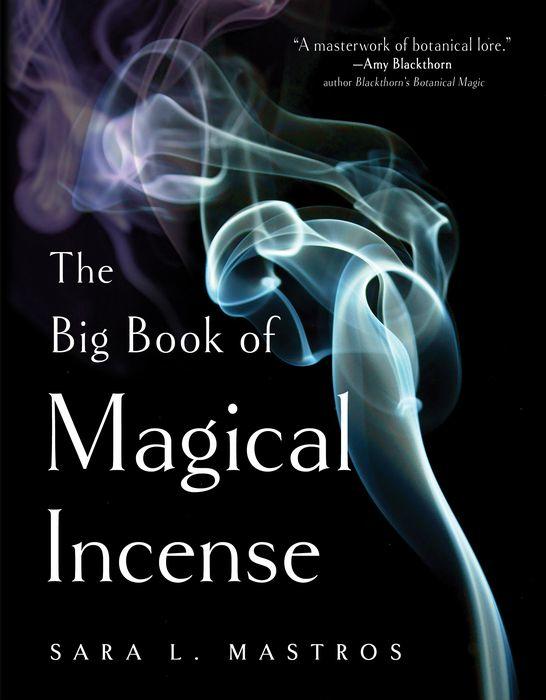This book offers a detailed description of the history, uses, and how-tos of making loose incense for a range of mystical purposes. In her introduction, Mastros states that one of her goals is to provide the reader with a sampler “from which you can branch out and research those things that most kindle your interest.” She does a good job of fulfilling the promises she makes in her introduction.
There are three parts – fundamentals, ingredients, and recipes.
Part 1 is an intersection of science, history and spirituality. Mastros describes how the chemical properties of scent affects the brain directly and immediately. She covers the historical aspects of incense from the discovery of natural scented materials found by archeologists explorating sites used by ancient cave dwellers, and traces the recorded development of incenses created around the world through the past few thousand years. There are some practical tips on options for burning incenses and different forms incense can take.
Part 2 provides in-depth descriptions of ingredients used in the creation of incense. Fifty materials are separated into related groups: resins, woods, herbs, flowers, spices, seeds berries, fruits, and non-plant materials. These ingredients are described for their natural properties, scent, and occult qualities. There’s information on how to work with these ingredients in your home laboratory, like when to grind and when to pulverize and the differences in how the material is handled and blended.
Part 3 is a trove of recipes that the author has worked with or developed herself. The ingredient lists for each blend are described in “parts”, i.e., 3 parts mint, 1 part cedar, etc. Most of the recipes are fairly simple and easy to construct. The recipes are followed with invocations and ritual descriptions, too. The author draws on her Jewish background for archangel-focused rituals, a lovely addition to the overall contents that makes this book unique among books on this topic. Recipes include general incenses, offering incenses for different realms, planets, elements, and ancestors, and a group of recipes for “named spirits” like deities, angels, and earth spirits. (Be advised that there are wide discrepancies in old grimoires about which items are attributed to planets.) There’s a section called “Interpreting Ancient Recipes” that I particularly enjoyed. Any person who wants to get into incense-making on a serious level should know how to construct an Abramelin blend, Kephi, and an oracular incense blend based on ancient records from the Oracle at Delphi. What people used then isn’t always practical or available now, so the author suggests reasonable substitutions.
This book isn’t an encyclopedia. As Mastros says in the intro, it’s a conversation between the author and the reader. Mastros shares her extensive experience with incense-making and what’s worked for her, her preferences and a lot of very useful tips. This is a fun-to-read book and the ingredients described in Part 2 aren’t terribly difficult to obtain. Readers should be able to start constructing their own ritual incenses while reading this book. The end matter includes notes, an extensive bibliography and an index.
It’s a well-written, nicely organized book and the publisher did a good job of formatting it and creating an evocative cover. The author’s friendly conversational tone welcomes the reader into the subject that she clearly loves and enjoys doing. This book is recommended for people who want to learn how to create their own ritual incenses and would benefit from hands-on instructions from a person who has a great deal of practical experience in this realm.
~review by Elizabeth Hazel
Author: Sara L. Mastros
2021, Red Wheel/Weiser
279 pages, $24.95 pb.
The Big Book of Magical Incense

©
2010 - 2025
Facing North
